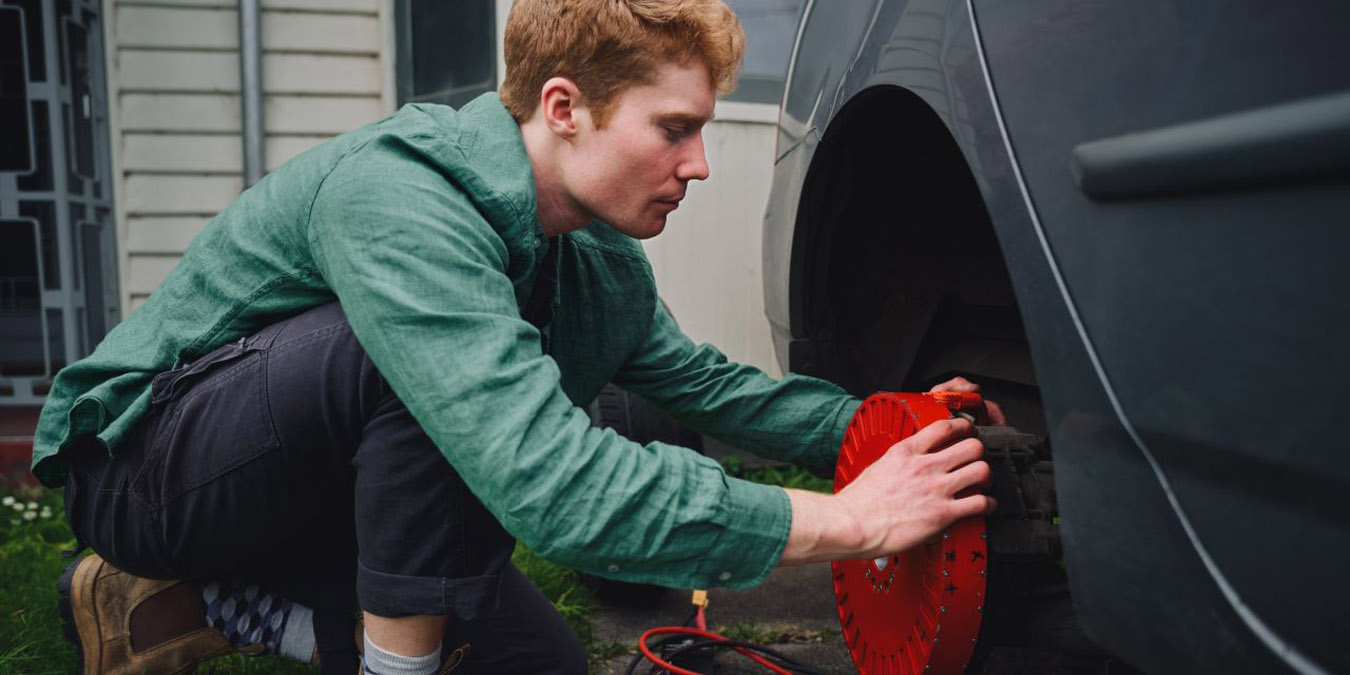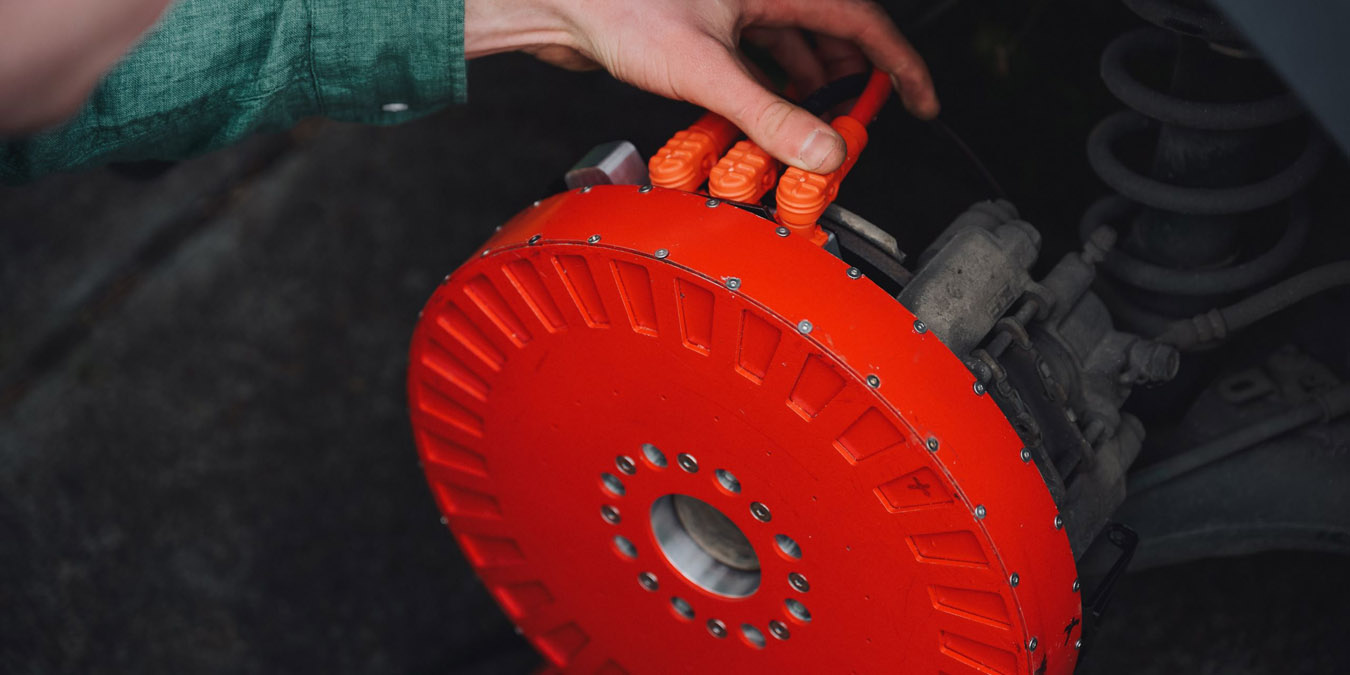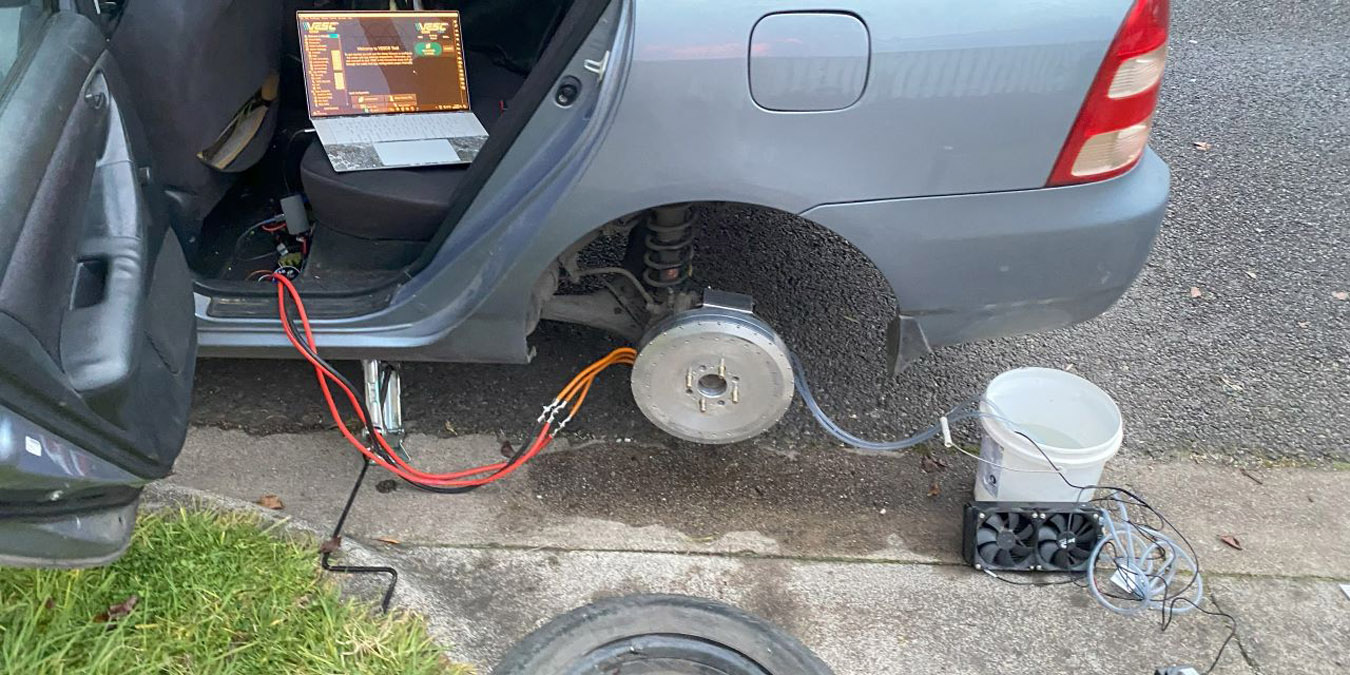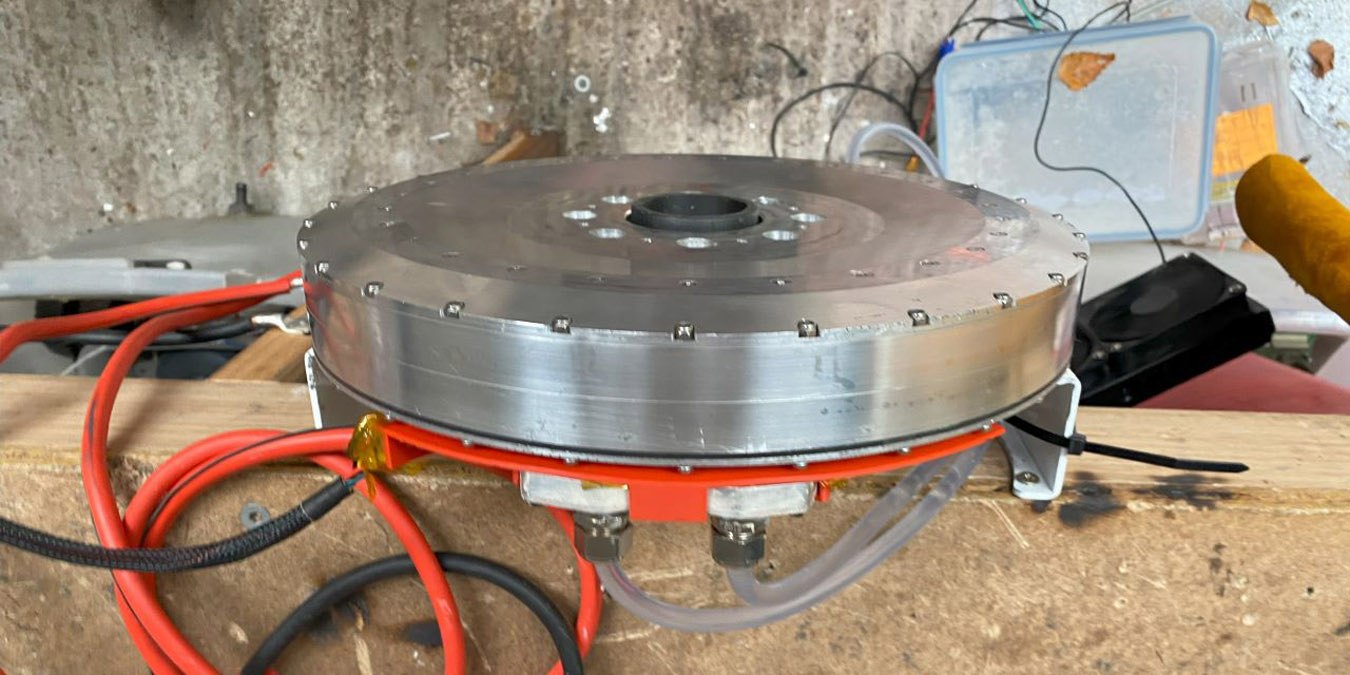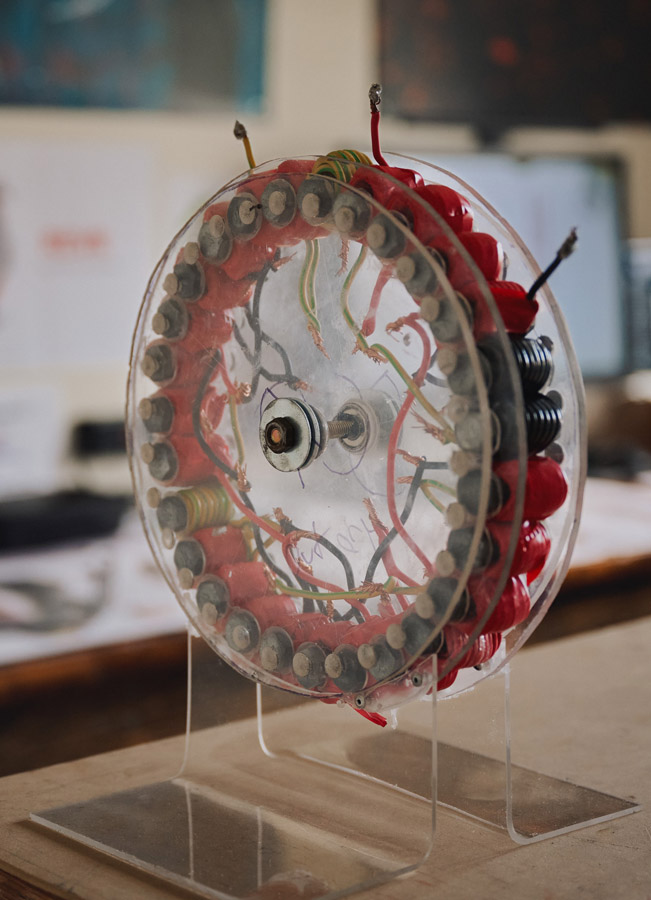I started from knowing nothing about motors, but I had a passion for CAD and tinkering so I took it on as a personal project during COVID. There is not much space inside the car so I focused on the large internal cavity inside the car wheels since this also does not vary too much between makes and models. After lots of research I stumbled upon an axial flux motor concept invented in 2009 called YASA used in a Rolls Royce airplane. I started my design from a small in-wheel hub motor and Iterated from there in Fusion 360. I employed freely available research magnetic flux modeling packages FEMM and MOTORXP and performed finite element analysis over hundreds of iterations to get to my final design. I underwent hands-on dimensions prototyping on my car to better understand how the motor could be installed. This included making a smaller motor using the same winding scheme from home wiring cable to validate the design. Many components used 3d printing and cnc technologies available at my university. Some components of the motor had to be manually melted and cast in copper from CAD shapes using lost-wax casting for me to remain in my budget. The key design constraint was size and cost-to-build, I wanted to use as many OEM parts as possible and limit CNC machining.
Rapid Electric Vehicle Retrofit (REVR) is a new way to convert petrol vehicles to hybrid electric quickly and cheaply.
Rapid Electric Vehicle Retrofit (REVR) is a new method for converting internal combustion engine (ICE) vehicles into hybrid electric vehicles (HEVs) that offers significant cost and time savings. REVR is designed for commuters who are facing increasing fuel and maintenance costs and want to reduce their emissions. Our custom motors provide direct drive benefits of high efficiency and low weight while taking only minutes to install with zero specialist knowledge.
Design Brief:
ICE vehicles are responsible for over 20% of global emissions. Commuters are seeking alternatives such as EV’s but they are too expensive and have considerable emissions impacts from their manufacture, similarly existing public transport is inadequate for most. The existing 1 billion + fleet of ICE vehicles are perfectly functional and fit for purpose. Retrofits retain the carbon invested in ICE cars and do not require a new carbon debt for a new car. Car retrofits for electric drive are not widely available to the general public and the present approach of replacing the entire drive train is slow and expensive. REVR needed to overcome the challenges that have prevented retrofits achieving widescale adoption, namely cost and complexity.
This project was developed by:

